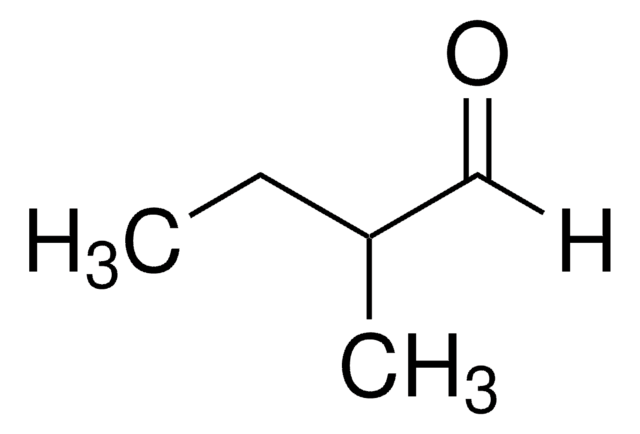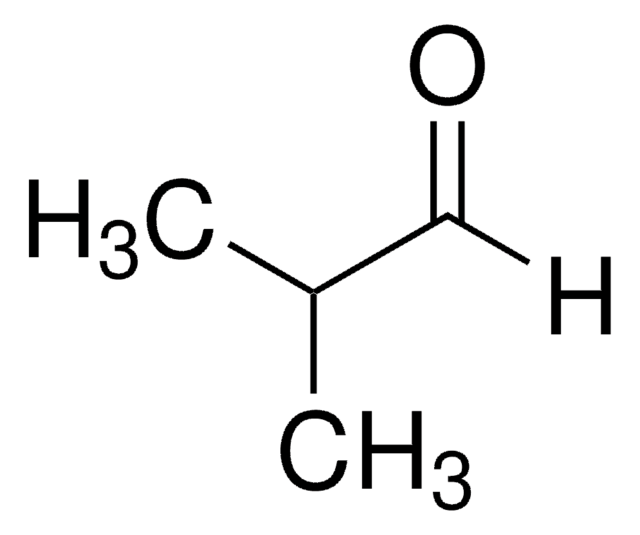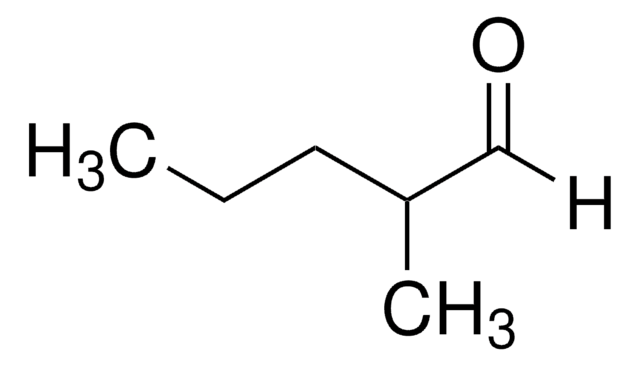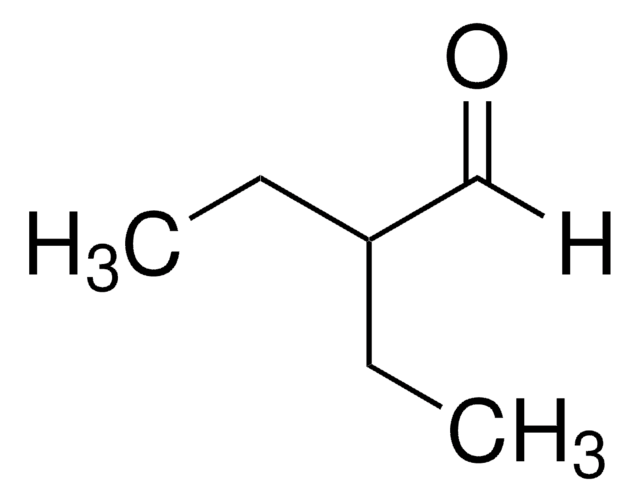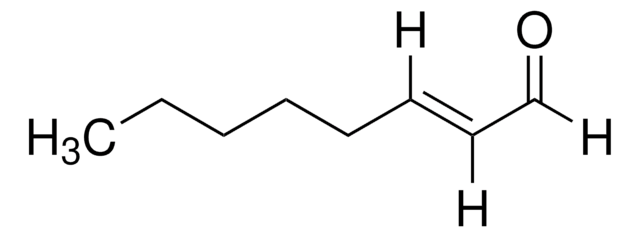Kluczowe dokumenty
W269107
2-Methylbutyraldehyde
≥95%, FG
Synonim(y):
2-Methylbutanal
About This Item
(follows IFRA guidelines)
Polecane produkty
pochodzenie biologiczne
synthetic
Poziom jakości
klasa czystości
FG
Fragrance grade
Halal
Kosher
agency
(EU Regulation 1223/2009)
(follows IFRA guidelines)
zgodność regionalna
EU Regulation 1334/2008 & 178/2002
FDA 21 CFR 117
FDA 21 CFR 172.515
Próba
≥95%
zanieczyszczenia
<5% isopentanal
współczynnik refrakcji
n20/D 1.3919 (lit.)
bp
90-92 °C (lit.)
gęstość
0.806 g/mL at 20 °C
0.804 g/mL at 25 °C (lit.)
Zastosowanie
flavors and fragrances
Dokumentacja
see Safety & Documentation for available documents
alergen pokarmowy
no known allergens
alergen zapachowy
no known allergens
Organoleptyczne
chocolate; coffee
ciąg SMILES
[H]C(=O)C(C)CC
InChI
1S/C5H10O/c1-3-5(2)4-6/h4-5H,3H2,1-2H3
Klucz InChI
BYGQBDHUGHBGMD-UHFFFAOYSA-N
Szukasz podobnych produktów? Odwiedź Przewodnik dotyczący porównywania produktów
Powiązane kategorie
Opis ogólny
Zastosowanie
- In Staphylococcus aureus, the acyl-CoA synthetase MbcS supports branched-chain fatty acid synthesis from carboxylic acid and aldehyde precursors.: This study explores the role of the enzyme MbcS in Staphylococcus aureus, demonstrating how it utilizes 2-Methylbutyraldehyde as a precursor in the synthesis of branched-chain fatty acids, which are essential for bacterial growth and virulence (Dos Santos Ferreira et al., 2024).
- Volatile Short-Chain Aliphatic Aldehydes Act as Taste Modulators through the Orally Expressed Calcium-Sensing Receptor CaSR.: This study investigates how volatile short-chain aldehydes, including 2-Methylbutyraldehyde, modulate taste perception through the calcium-sensing receptor CaSR, providing insights into their potential applications in food and flavor industries (Kitajima et al., 2023).
Hasło ostrzegawcze
Danger
Zwroty wskazujące rodzaj zagrożenia
Zwroty wskazujące środki ostrożności
Klasyfikacja zagrożeń
Aquatic Chronic 2 - Eye Irrit. 2 - Flam. Liq. 2 - Skin Sens. 1 - STOT SE 3
Organy docelowe
Respiratory system
Kod klasy składowania
3 - Flammable liquids
Klasa zagrożenia wodnego (WGK)
WGK 2
Temperatura zapłonu (°F)
23.0 °F
Temperatura zapłonu (°C)
-5 °C
Środki ochrony indywidualnej
Eyeshields, Faceshields, Gloves, type ABEK (EN14387) respirator filter
Wybierz jedną z najnowszych wersji:
Masz już ten produkt?
Dokumenty związane z niedawno zakupionymi produktami zostały zamieszczone w Bibliotece dokumentów.
Klienci oglądali również te produkty
Global Trade Item Number
| SKU | GTIN |
|---|---|
| W269107-1KG | |
| W269107-200G | |
| W269107-4KG | |
| W269107-4KG-K | |
| W269107-1KG-K | 4061837515996 |
| W269107-SAMPLE | |
| W269107-100G | |
| W269107-100G-K | 4061837835070 |
| W269107-1G | |
| W269107-800G | |
| W269107-8KG | |
| W269107-8KG-K | 4061837835087 |
| W269107-SAMPLE-K | 4061837516009 |
Nasz zespół naukowców ma doświadczenie we wszystkich obszarach badań, w tym w naukach przyrodniczych, materiałoznawstwie, syntezie chemicznej, chromatografii, analityce i wielu innych dziedzinach.
Skontaktuj się z zespołem ds. pomocy technicznej
